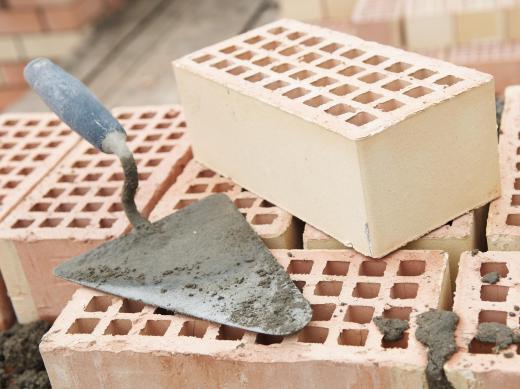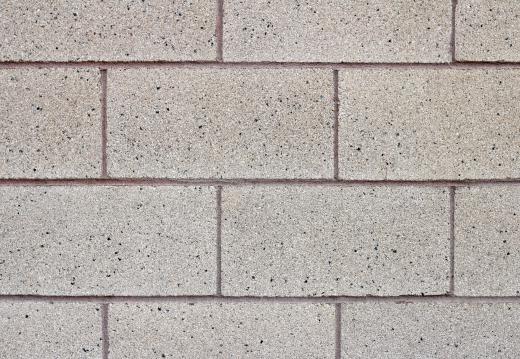Brick construction can be an attractive addition to any home or building but broken bricks typically are not appealing to the eye. It can be crucial to learn about brick repairs in order to keep a structure attractive for years. Though some people prefer to hire a brick contractor to complete the more complicated brick repair jobs, much of the basic upkeep usually can be done by anyone.
Cracks in bricks might seem unimportant but even tiny cracks can grow quickly. Additionally, where there is one crack, many more are likely. The two main types of cracks are: active, which will spread over time, and passive, which will not. Active cracks often require the bricks to be replaced, but passive cracks that will not continue to spread usually can be repaired.

The main method of repairing cracks is repointing which involves removing and replacing old mortar. Generally it is best to wear eye protection while using a brick chisel, screwdriver, or drill to clean the crack of any debris or crumbled pieces of brick. Spraying the crack with water can help ensure all debris is removed.
The next step is to mix some mortar and let it dry in an inconspicuous area of brick to make sure it is the right color. Once it is clear that the mortar matches the rest of the brick structure, it can be applied and flattened using a trowel. The area will need to be sprayed with water for about a week after the brick repair is complete. It is important to keep it wet during the repair as well, which is why a garden hose can be an invaluable tool during the process.

If there is any unwanted residue left after the brick repair, it can be removed using muriatic acid. It is generally recommended that gloves and safety goggles are worn when applying it. In fact, a particle mask can even be worn when removing old mortar from the structure.
Homeowners with experience fixing up their house might not find brick repair too challenging, but having at least one other person to help usually is recommended. Mortar can be found at most home repair shops, and a type specially made for brick repairs typically is available at such stores. Those not familiar with regular home repairs might deem brick repair a job for a professional brick contractor.

